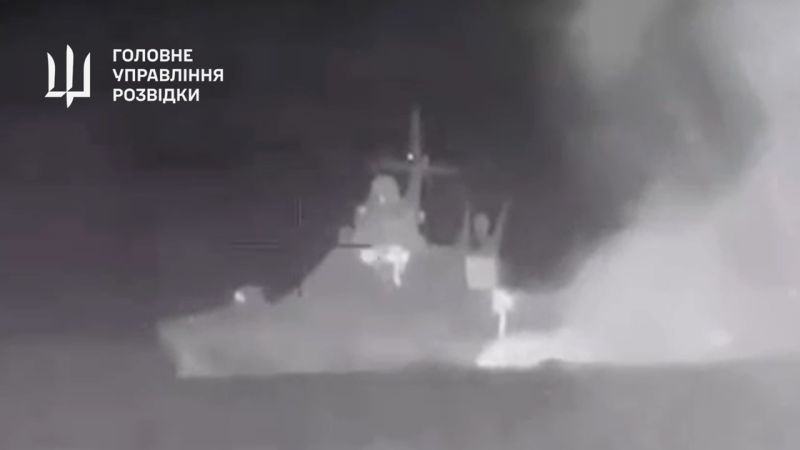Ukraine’s defense facilities are reportedly making a significant impact in the ongoing conflict with Russia, more especially with its arsenal of drones. As per the recent updates from Ukraine’s capital, Kyiv, another Russian warship has been sunk by these critical components of Ukraine’s military strategy.
Ukrainian officials suggest that their use of drones in warfare has been instrumental in managing the Russian offensive operation. The drones have provided both offensive capabilities, causing direct damage to the enemy, and surveillance capabilities, allowing the military to gather valuable intelligence information.
The latest incident, of a Russian warship submerged, allegedly by a Turkish-made Bayraktar drone operated by the Ukrainian military, proves Ukraine’s strategic competence in warfare. As reports explain, the unmanned aerial vehicle (UAV) launched a barrage of strikes on the warship, creating substantial damage and ultimately leading to its sinking.
This incident denotes the escalating role of unmanned systems in modern warfare, signifying their essential place in land, air, and maritime battles. Interestingly, this particular drone model purchased from Turkey has been crucial to the Ukrainian strategy. The Bayraktar TB2, a medium altitude, long-endurance UAV, signed into service in 2014, is reported to endure for up to 24 hours in the air and can be used for reconnaissance, surveillance, intelligence, and territorial domination.
Remarkably, the drone boasts a range of 150 kilometers and can deliver guided ammunition with high precision. Armaments that the Bayraktar can carry include Roketsan’s smart micro munition MAM-L and MAM-C. These missiles have a substantial destructive potential, and their usage has thus far proved substantially effective.
The effectiveness of these unmanned systems was displayed in the sinking of the Russian warship. Accurate strikes via guided missiles ensured that the vessel was so significantly damaged that it could not stay afloat. This recent event is not the only success claimed by Ukraine; previously too, Kyiv reported that these drones had taken out many Russian tankers and radar systems, facilitating a tactical advantage.
International agencies and military analysts have closely studied the operational efficiency of Ukrainian drones. The task of managing drones requires strategic acumen, technical know-how, perfect coordination, and real-time information and decision-making. The UAVs are operated from a ground control station, and their effectiveness depends on the competence of various component operators. The way Ukraine’s military has been handling these operations demonstrates their strategic competence in the battlefield.
Nevertheless, this level of success does not come devoid of challenges. The Ukrainian military faces significant risks concerning the drones’ lifespan, vulnerability to enemy defense systems, procurement costs, and their dependence on foreign supplies. Despite these, the success suggests that the benefits have so far vastly outweighed the costs.
In summary, the sinking of another Russian warship by a Ukrainian-operated drone arrest international attention to the escalating role of unmanned systems in warfare dynamics. The effectiveness of use and strategic competence displayed by Ukraine’s military in drone operations underlies the significant potential these machines possess in transforming modern warfare.




